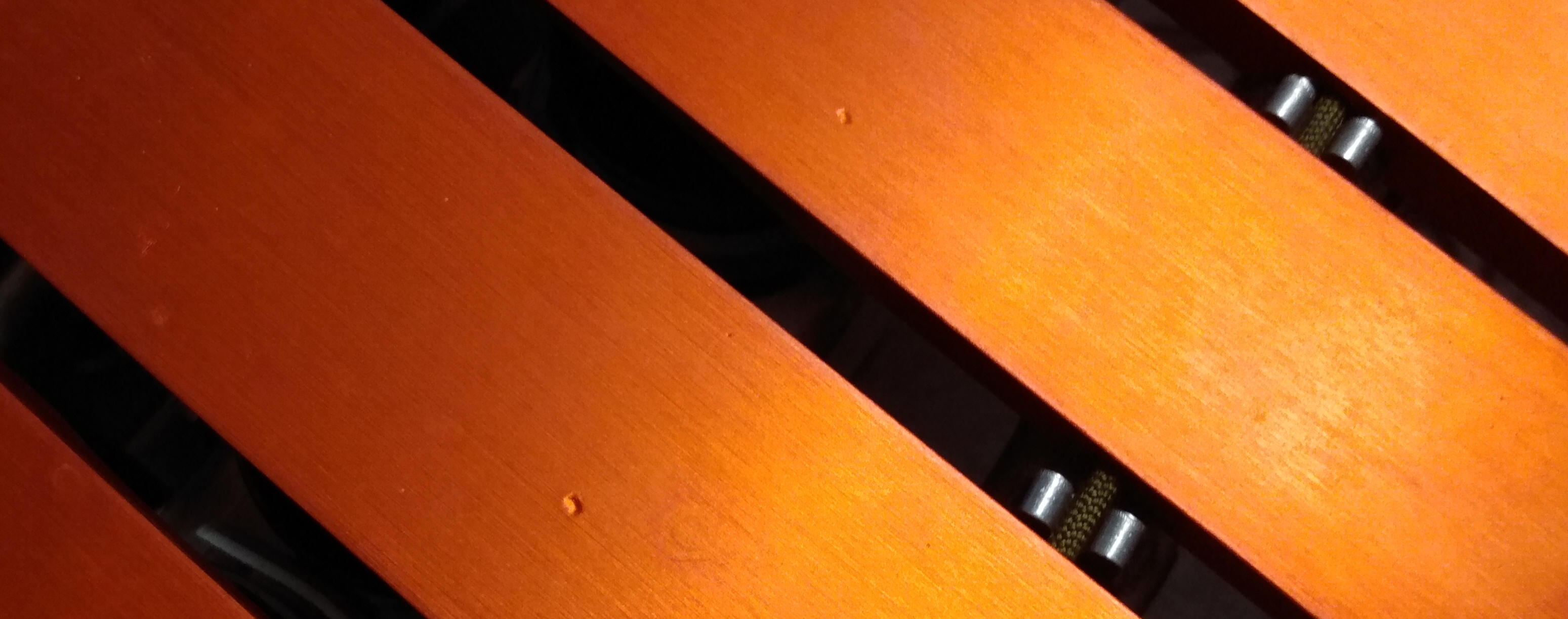All of the available bar sets were in imperial dimensions, that is, width gradation 2 1/4 ", 2", 1.75 "and 1.5". That is why our self-made frames are also designed for these bar widths.
The width gradation for our bars was thus fixed.
The same applies accordingly to the position of the cords, since these have to be guided in the frame. The bar lengths then need to correspond to the American model.
The plate standard thickness in the USA of 1/2 "= 12.7mm was not available in Germany. So we faced the alternative of milling the plates out of 15mm thick material, or to create the tuning geometry on the next standard thickness of 12mm.
Due to the limited access to a suitable milling machine, we decided to have the bar widths cut out as strips from 12mm thick standard panels.
- On the one hand, the surfaces of the strips are already damaged (scratches, dents, ...), which we then have in the finished bars.
-
Secondly, the plate thicknesses showed
considerable tolerances, which ranged from 12.0 to 12.33 mm.
When determining the required tuning geometry (modal analysis simulation), we found that deviations in the range of just 0.1 mm in the bar thickness have a very strong influence on the sound spectrum. We therefore had to measure each individual bar exactly after sawing and adjust the tuning geometry to the measured bar thickness.
As a result, we can only use the tuning geometry as determined for exactly this one bar set.
The next set of bars will therefore be sawn out of 15mm thick sheets. Then the strips are milled on both sides to an exact dimension (e.g. 13mm).

What if you change the geometry specifications?
To find out, we investigated whether bars could not be made from only 10mm thick material to save weight. Because all possible youth vibraphones instead reduce the width of the bars, i.e. the scale, we thought that we wanted to test another way.
In a simulation, we kept the gradation according to the American model, so that the feel remains unchanged, but then we reduced the bar thickness to 10mm. In order to get back to the desired sound spectrum from step 1, we also had to reduce the length of the bars.
We have not yet simulated the entire
bar set, but we checked the key points.
The result is the bar
set shown in gray above the gold M55 bars.
This would result in a weight saving of around 1.3 kg, almost 10% of the sound bars. The feeling when playing should be largely identical due to the constant gradation of width and the sound spectrum as well.
The amplitude spectrum would be different, i.e. how strong the individual harmonic frequencies are compared to the others and the basic frequency.
